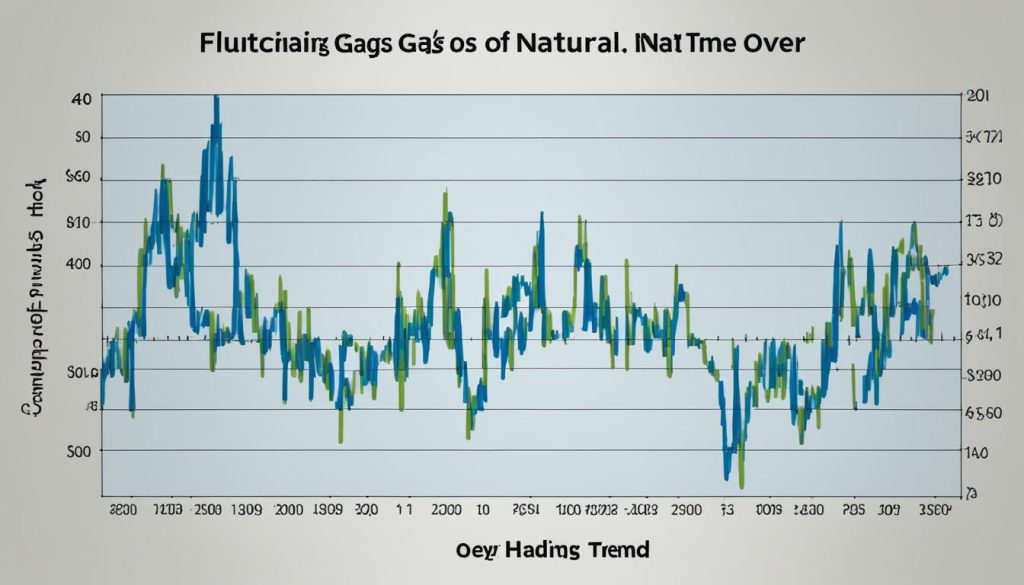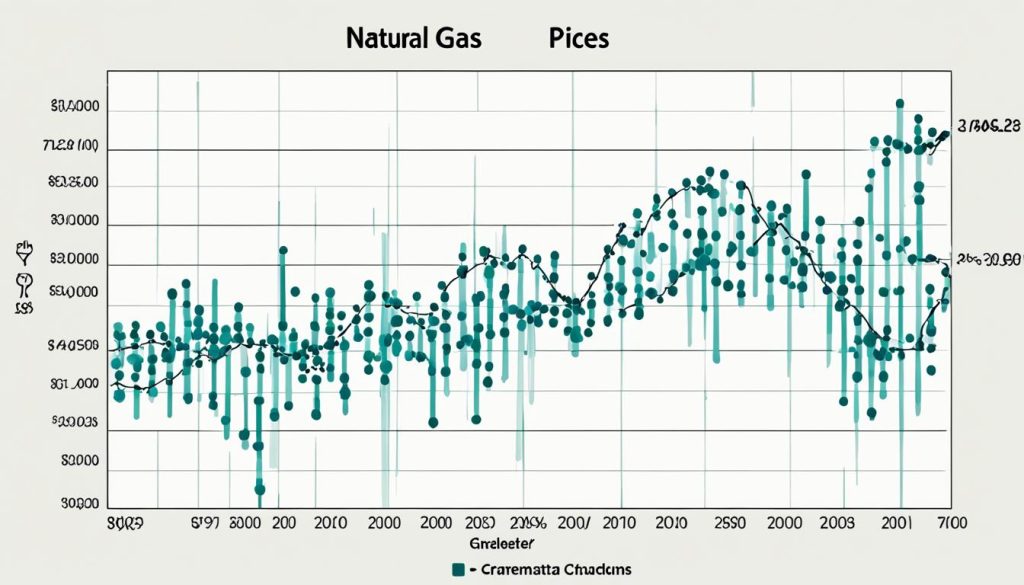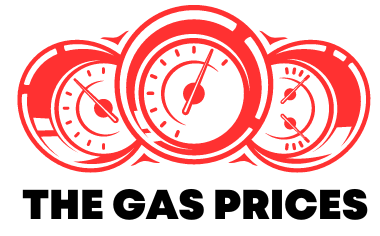As the global energy landscape continues to evolve, it is essential to keep a finger on the pulse of the Gas Prices . Whether you are an investor or a consumer, understanding these trends can significantly impact your decision-making process. By staying informed, you can make better-informed choices regarding your natural gas investments or consumption.

So, what are the current trends surrounding Natural Gas Price? It is crucial to stay up-to-date with the latest market insights in order to stay ahead of the curve. By monitoring the fluctuations and patterns in Natural Gas Price, you can better gauge the market conditions and make strategic decisions accordingly.
Also Read: Wawa Gas Prices
Key Takeaways:
- Understanding Natural Gas Price trends is crucial for making informed decisions.
- Monitoring market insights helps you stay ahead of the curve.
- Keeping track of price fluctuations and patterns can help you make strategic decisions.
- Investing or consuming natural gas requires a comprehensive understanding of the market.
- Stay up-to-date with the latest news and analysis in the natural gas industry.
Factors Influencing Natural Gas Price Fluctuations
In this section, we will explore the various factors that contribute to the fluctuations in Natural Gas Price. By understanding these factors, including supply and demand dynamics, weather patterns, geopolitical events, and technological advancements, you can gain valuable insights into the future trajectory of Natural Gas Price.
Supply and Demand Dynamics:
The balance between the supply and demand of natural gas plays a crucial role in determining its price. Any disruptions in the production, transportation, or distribution of natural gas can impact its availability and, consequently, its price. Shifts in consumer demand, such as increased usage during cold winters or decreased consumption due to the adoption of alternative energy sources, can also affect prices.
Weather Patterns:
Weather conditions, especially during extreme seasons, have a significant influence on natural gas prices. Cold winters often lead to higher demand for heating, which drives up prices. Conversely, mild weather can result in decreased demand, causing prices to decline. Other weather-related factors, such as hurricanes or storms that disrupt production or transportation infrastructure, can also impact prices.
Geopolitical Events:
Political events, conflicts, and natural disasters in major natural gas-producing regions can have a substantial impact on prices. Geostrategic tensions, trade disputes, and sanctions can disrupt supply chains and create price uncertainties. Additionally, natural disasters like earthquakes or hurricanes can damage production facilities and pipelines, leading to supply disruptions and higher prices.
Technological Advancements:
Advancements in extraction technologies, such as hydraulic fracturing (fracking) and horizontal drilling, can significantly impact natural gas prices. These innovations have expanded the availability of natural gas, leading to increased supply and potentially lower prices. Conversely, technological advancements in other energy sources, like renewable energy, may reduce the demand for natural gas and influence its price.
Understanding the interplay of these factors is crucial for predicting and reacting to changes in Natural Gas Price. By closely monitoring and analyzing supply and demand dynamics, weather patterns, geopolitical events, and technological advancements, individuals and businesses can make informed decisions and develop effective strategies in response to natural gas price fluctuations.
Forecasting Natural Gas Price Movements
When it comes to navigating the natural gas market, predicting price movements becomes a key factor in making informed decisions. In this section, we will explore the methodologies used for forecasting Natural Gas Price movements, equipping you with the knowledge necessary to strategize effectively.
Models and Approaches
Forecasting Natural Gas Price involves utilizing various models and approaches, each providing valuable insights into market dynamics. Let’s take a closer look at three commonly used techniques:
- Fundamental Analysis: This approach analyzes supply and demand factors, such as production levels, storage capacities, consumption patterns, and economic indicators. By assessing the underlying fundamentals of the natural gas market, fundamental analysis provides a long-term perspective on price movements.
- Technical Analysis: With a focus on historical price data and market trends, technical analysis aims to identify recurring patterns and indicators. Chart patterns, moving averages, and oscillators are among the tools used to assess market sentiment and predict short to medium-term price movements.
- Market Sentiment Indicators: This approach incorporates qualitative factors, such as news sentiment, investor sentiment, and geopolitical factors. By gauging market sentiment, forecasters can anticipate potential shifts in demand and supply dynamics, thereby predicting price movements accordingly.
Enhancing Accuracy and Strategy
Incorporating a combination of these forecasting techniques can enhance the accuracy of predictions. Combining fundamental analysis with technical analysis, for example, allows for a comprehensive assessment of both long-term trends and short-term price movements.
By staying informed about industry trends, technological advancements, geopolitical developments, and other relevant factors, you can make more accurate predictions and adjust your strategies accordingly.

| Model | Accuracy | Time Horizon |
|---|---|---|
| Fundamental Analysis | High | Long-term |
| Technical Analysis | Medium | Short to medium-term |
| Market Sentiment Indicators | Medium | Short-term |
Conclusion
In conclusion, staying updated on Natural Gas Price trends is crucial for making well-informed decisions. The natural gas market is influenced by various factors, including supply and demand dynamics, weather patterns, geopolitical events, and technological advancements. By understanding these factors and their impact on price fluctuations, you can navigate the market more effectively.
Utilizing forecasting techniques is another key aspect of staying ahead in the industry. Fundamental analysis, technical analysis, and market sentiment indicators are commonly used methods for predicting Natural Gas Price movements. By incorporating these approaches into your strategies, you can make more accurate predictions and adjust your plans accordingly.
Furthermore, it is essential to continuously monitor market insights and stay informed about the latest developments. This allows you to identify emerging trends, seize opportunities, and mitigate risks. Whether you are involved in natural gas investments or consumption, staying proactive and adaptable is crucial for success in the ever-changing natural gas industry.
By combining your knowledge of price trends, understanding of influencing factors, and effective forecasting techniques, you can position yourself to maximize your success in the Natural Gas Price industry. Keep your finger on the pulse of the market, make data-driven decisions, and always be prepared to adjust your strategies to capitalize on the evolving landscape.
FAQ
What are some current trends surrounding Natural Gas Price?
The current trends surrounding Natural Gas Price include increased demand for clean energy sources, fluctuations in global oil prices, and regulatory factors affecting supply and production. Keeping an eye on these trends can help investors and consumers stay informed and make strategic decisions.
What factors influence the fluctuations in Natural Gas Price?
Several factors influence the fluctuations in Natural Gas Price, including supply and demand dynamics, weather patterns, geopolitical events, and technological advancements. Understanding these factors can provide valuable insights into the future trajectory of Natural Gas Price and help individuals and businesses prepare for price changes.
How can I forecast Natural Gas Price movements?
Forecasting Natural Gas Price movements involves analyzing various factors and utilizing forecasting techniques. These may include fundamental analysis, which assesses supply and demand fundamentals, technical analysis, which examines historical price data, and market sentiment indicators. By incorporating these forecasting techniques, you can make more informed predictions about Natural Gas Price movements.
Why is it important to stay updated on Natural Gas Price trends?
Staying updated on Natural Gas Price trends is crucial for making well-informed decisions. By understanding the factors influencing price fluctuations and utilizing forecasting techniques, you can navigate the natural gas market more effectively. Monitoring market insights and adjusting your strategies accordingly can help maximize your success in the natural gas industry.
